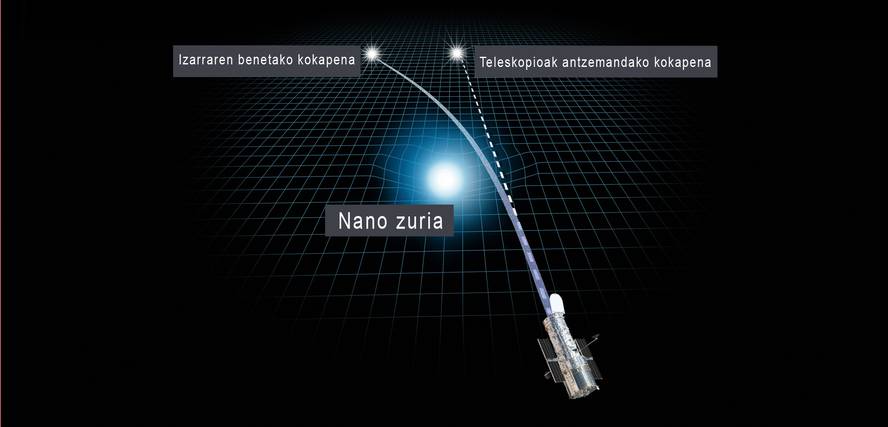Einstein gets what he deemed impossible
When Albert Einstein worked on the general theory of relativity, he foresaw that light curves by the action of a mass. Based on that, he said that if a star passed right between us and a later star, we could see the star from behind even when they are on par. In fact, by passing the light of the distant star next to the other, its gravity would worsen that light, creating the so-called “Einstein ring” around the nearby star. This curvature of light would lead us to see the back star as if it had shifted. Well, researchers at the Space Telescope Science Institute in the United States have obtained this time an experimental proof of this phenomenon.
The truth is that it is not the first time this deviation from light is experimentally tested. It was already seen in a 1919 solar eclipse. They saw that a star behind the Sun appeared displaced by the presence of the Sun itself. But it has taken 100 years of technological advances to demonstrate this phenomenon with a star different from the Sun.
Einstein himself acknowledged in the Science magazine of 1936 that the stars were so far from us that he had no hope of directly detecting this phenomenon. It would be surprising if I had known that today the journal Science has published the experimental proof of this phenomenon.
It has served to close the discussion of a white dwarf
The authors of the paper used the largest angular resolution of the Hubble space telescope and looked for it among more than 5,000 stars to find stars like that aligned: they realized that the white dwarf Stein 2015 B remained in that situation in March 2014. They directed the Hubble telescope there and were able to measure small changes in the apparent arrangement of the rear star of the white nano. From this data they have calculated that the white dwarf accounts for approximately 68% of the mass of our Sun.
Due to the relative distance, this ditch observed in light has been 1,000 times smaller than that observed in 1919, but it coincides with the general theory of relativity.
However, for physicist Ion Errea of the Donostia International Physics Center, the real contribution of the research is the calculation of the mass of white nano. “They knew that the deviation of light was to occur. In short, if it happens with the Sun, it will also happen with other stars. But this gravitational effect allows us to measure the mass of stars or astronomical objects.”

According to Errea, “Stein 2015 B has been a major debate over the mass of white nano for a hundred years. It was not well defined and there were big differences according to the method. This effect has given a new way to measure with guarantee, although in reality there will be few stars aligned like that.”
Measuring the mass of this white dwarf can also help to better understand the history of white dwarfs. Most stars will someday end up being nano white, so it can be said that white dwarfs are fossils of stars from previous generations, allowing them to be key to seeing the evolution of galaxies.






